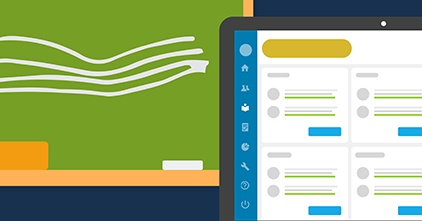With the online space taking the world by storm, many learning leaders and learners are now asking themselves this very question — can digital learning replace in-person training?
Face-to-Face is the traditional way of instruction where students and teachers attend an in-person learning session at the same time. Digital is a technology-enhanced educational strategy that makes effective use of online learning tools.
Key Differences
1. Human Connection
F2F: Can foster a dynamic trainer-learner relationship.
Digital: Enhances human connection through interactive and collaborative tools.
2. Flexibility
F2F: The pace of learning is controlled by the trainer and is usually held for hours.
Digital: More student-centered since the learner has the freedom to control the pace of learning.
3. Accessibility
F2F: Learners and the trainer have to be in the same place at the same time to start the session.
Digital: Learning can be done anywhere, anytime, on any device.
4. Content
F2F: Learning content isn’t on-demand, and primarily depends on collective group needs.
Digital: Empowers learners with easy access to whichever learning topic, resource or tool works best for their needs and goals.
5. Speed and Effectiveness
F2F: Retention rates are very low with just 8% to 10% as F2F materials are longer in form.
Digital: It takes less time to learn the same material as eLearning boosts knowledge retention by 25-60%.
6. Personalized Guidance
F2F: While F2F also provides one-on-one guidance, it’s limited to in-person sessions.
Digital: Allows for greater interaction and feedback between the trainer and learner.
7. Budget
F2F: Costs more since the budget is spent on the venue and physical learning materials.
Digital: Offers a lot of savings since overhead costs are reduced.
8. Greater Reach
F2F: Limited to physical locations and prone to inconsistencies across a global company.
Digital: Allows for centralization of learning across the company.
9. Management and Reporting
F2F: Challenging to manage since most of the administrative work has to be done manually.
Digital: A truly industrialized solution that easily allows managers to view on-demand reports, and monitor usage and progress.
Our Verdict: Learners Want Digital!
Digital learning is an opportunity to make personalized, relevant learning accessible to employees whenever and wherever they need it. More than that, developing a sustainable digital learning strategy will be a huge business benefit moving forward!
82% of organizations plan to start producing more digital learning.
5% of learning leaders think learning strategy, investment, and resourcing will go back to what they were.
0% of organizations (as of June 2020) plan to increase face-to-face in the next 12 months.
Sources: eLearning Industry, Elucidat, Fosway, Brandon Hall Group, Research Institute of America
Lorem Ipsum is simply dummy text of the printing and typesetting industry. Lorem Ipsum has been the industry’s standard dummy text ever since the 1500s, when an unknown printer took a galley of type and scrambled it to make a type specimen book.
Abc Company
CEO




